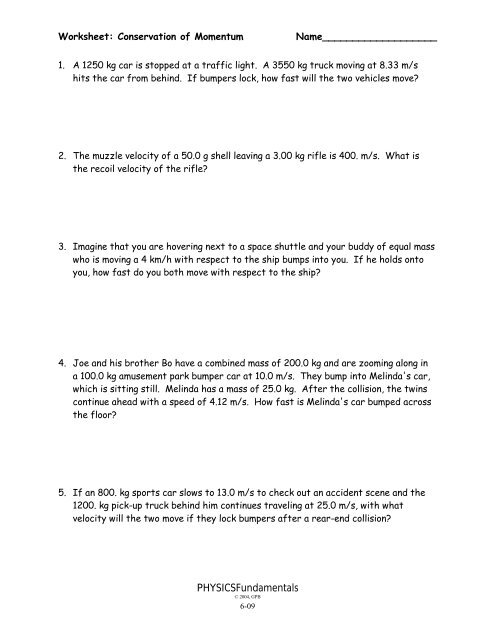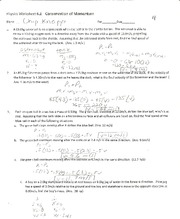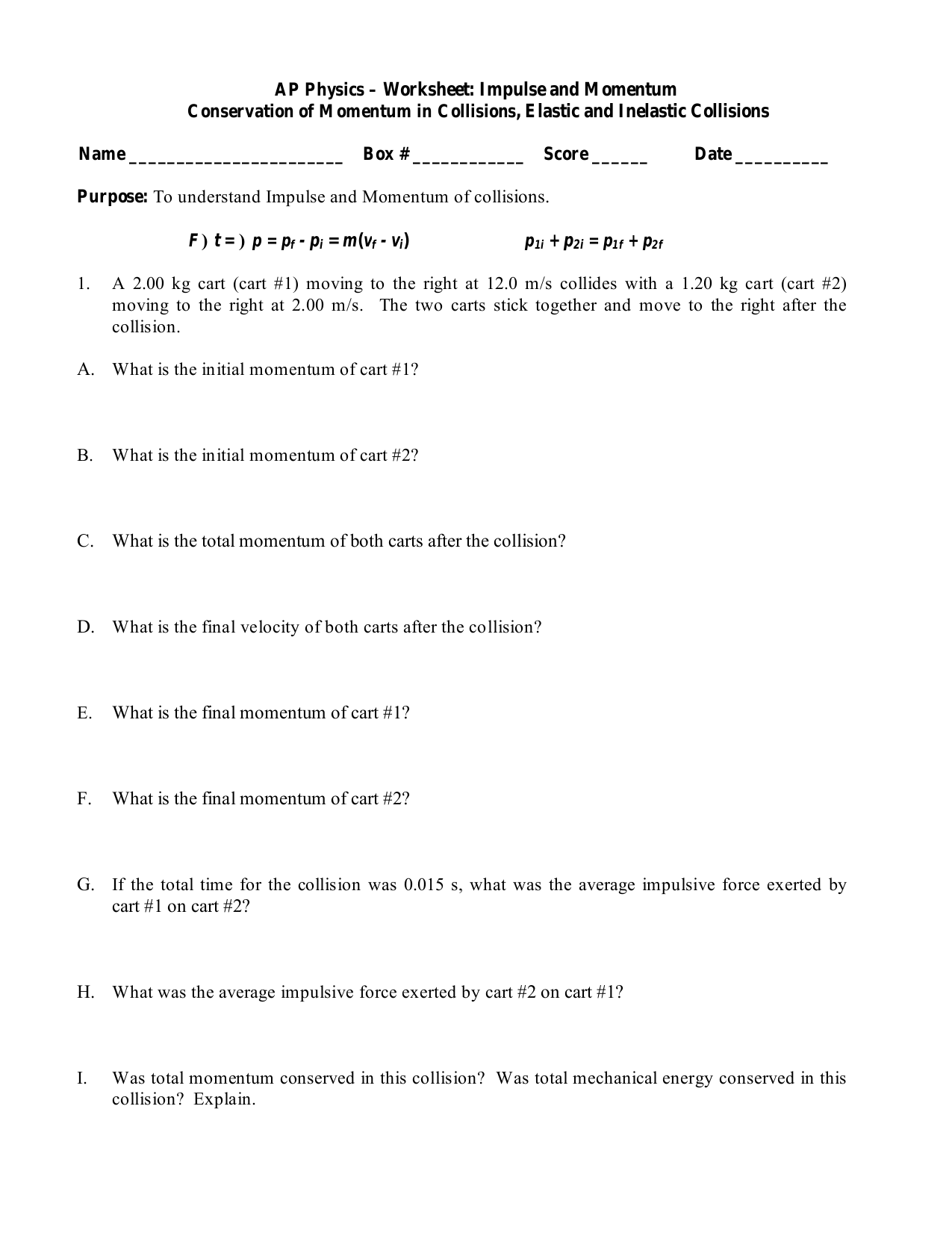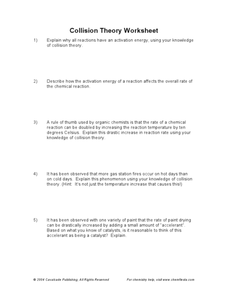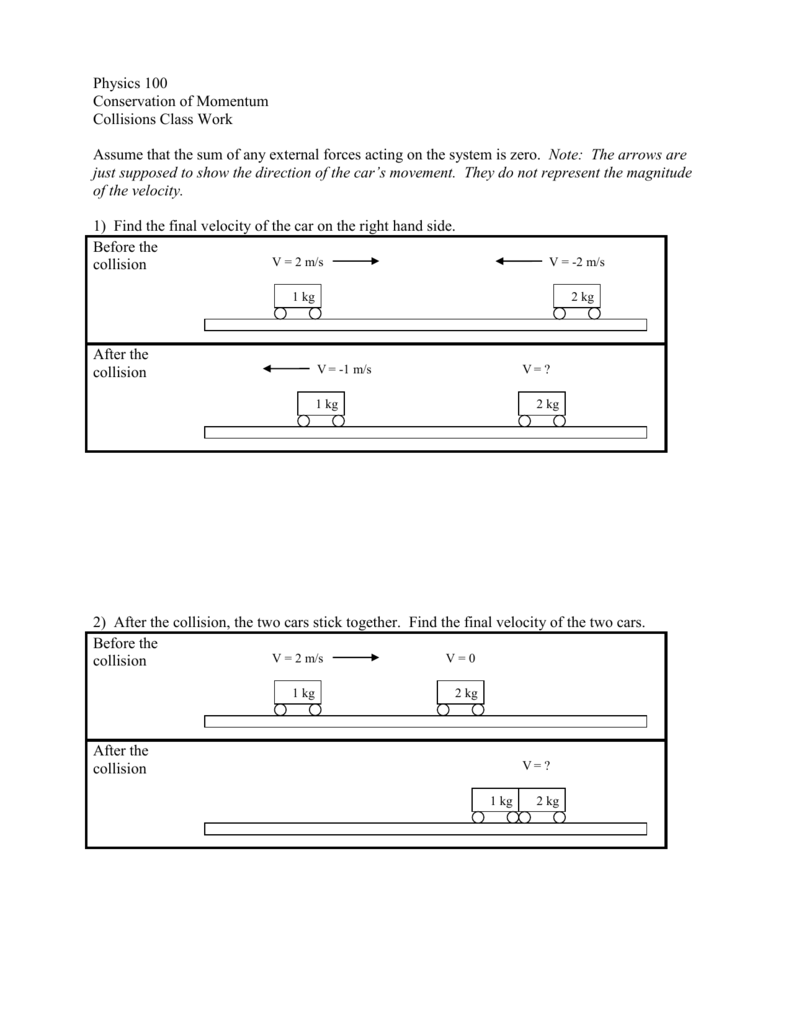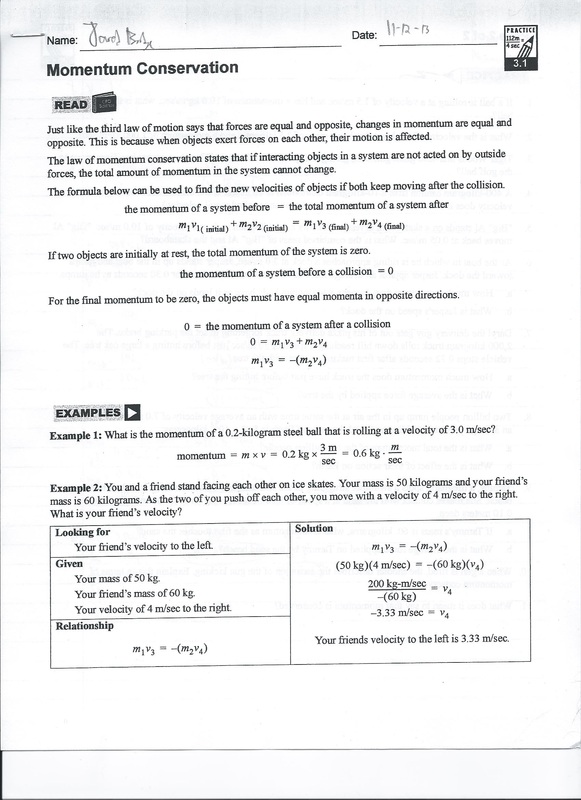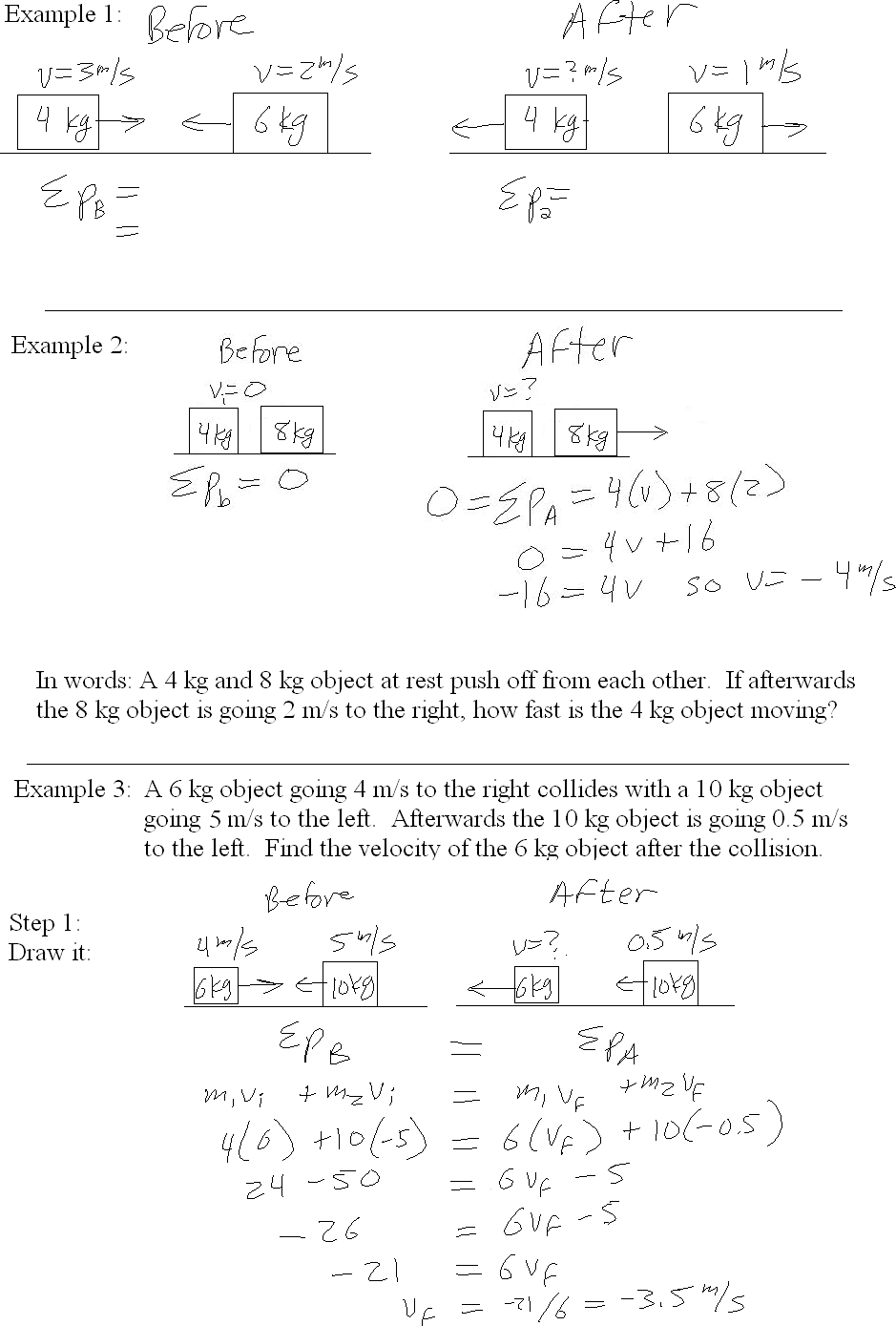Collisions And Conservation Of Momentum Worksheet
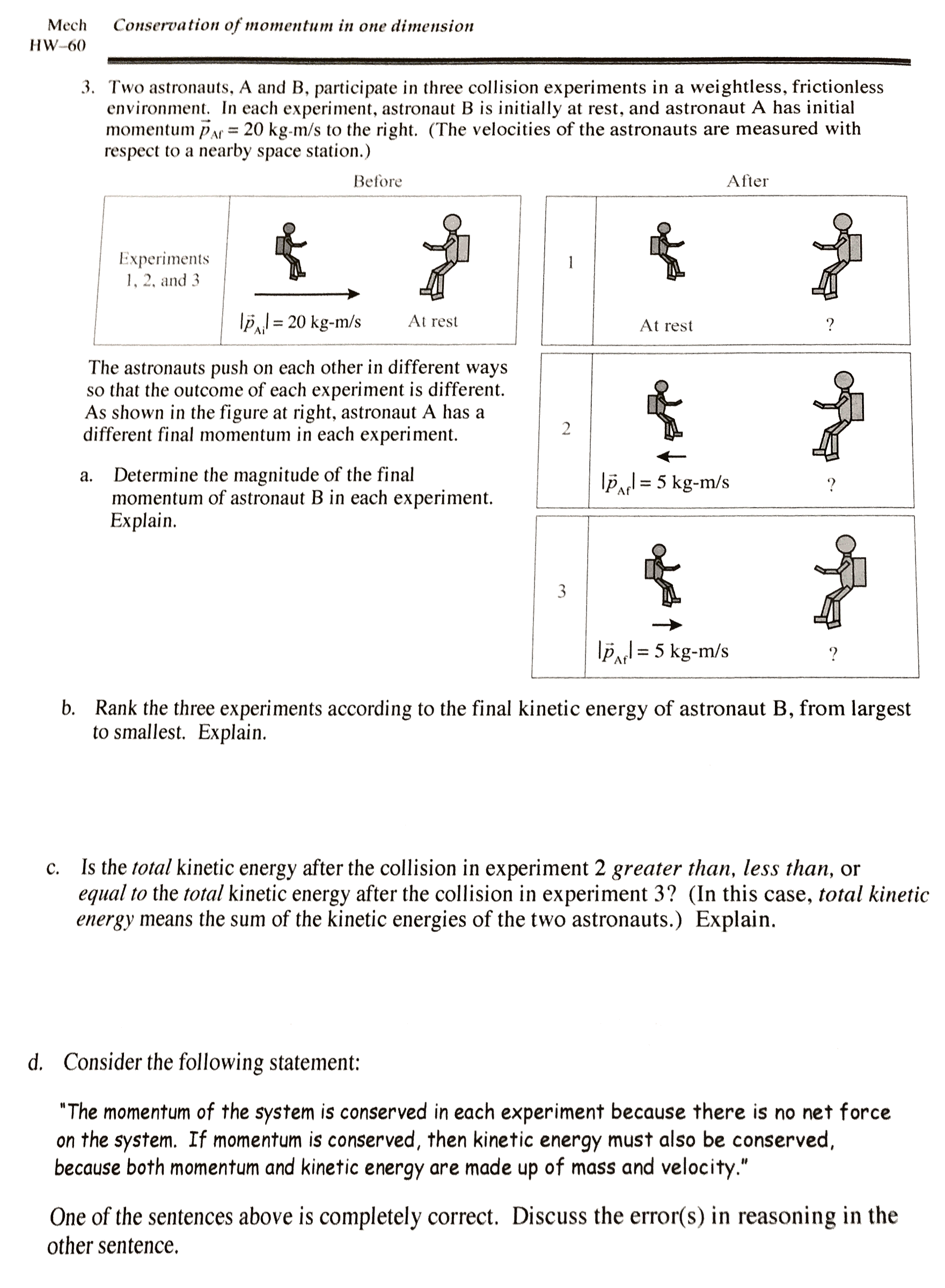
Consider the two types of collisions that can occur.
Collisions and conservation of momentum worksheet. 5 2 conservation of momentum according to the law of conservation of momentumthe total momentum in a system remains the same if no external forces act on the system. 5 2 conservation of momentum. Conservation of momentum chapter 8. According to the law of conservation of momentum the total momentum in a system remains the same if no external forces act on the system.
Momentum and collisions the following pdf files represent a collection of classroom ready think sheets pertaining to the topic of motion in one dimension. Apply law of conservation of momentum to solve problems of collisions. A compact car with a mass of 725 kg is moving at 90 kmhr toward the east. A collision in which objects collide and bounce apart with no energy loss.
In this worksheet we will practice applying the law of conservation of momentum to study collisions in one dimension and differentiating between elastic and inelastic collisions. Consider the two types of collisions that can occur. Answer the following questions concerning the conservation of momentum using the equations below. Show all of you work to receive credit.
The think sheets are synchronized to readings from the physics classroom tutorial and to missions of the minds on physics program. Conservation of momentum explaining both explosions and collisions aqa p2. P mv ft mv impulse ft pbefore pafter net momentum before net momentum after m1v1 m2v2 before m1v1 m2v2after 1. Momentum worksheet 3 elasticinelastic.
V is a vector so momentum is a vector with mass being a scalar. In the si measuring system mass is measured in kilograms kg and velocity is in units of ms so momentum is measured in units of kg ms or p is in units of kg ms. Momentum worksheetactivity d momentum is defined as a mass moving or mv. Vocabulary elastic collisiona collision in which objects collide and bounce apart with no energy loss.
Construct momentum vector representations of before and after collisions. Find the magnitude and direction of its momentum. Vary the elasticity and see how the total momentum and kinetic energy changes during collisions. A ball of mass 3 kg moving in a straight line at 32 cms collided with another ball of mass 25 kg that was at rest.
Kinetic energy is not conserved but momentum still is.
